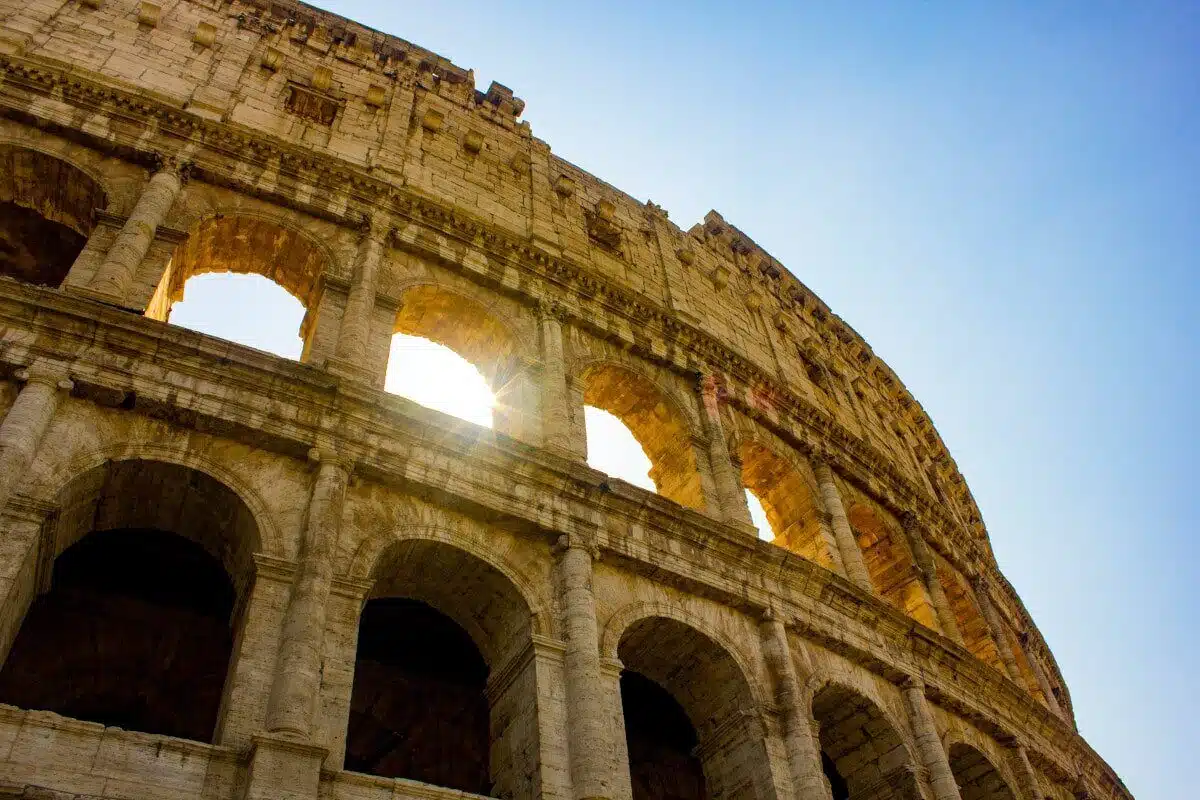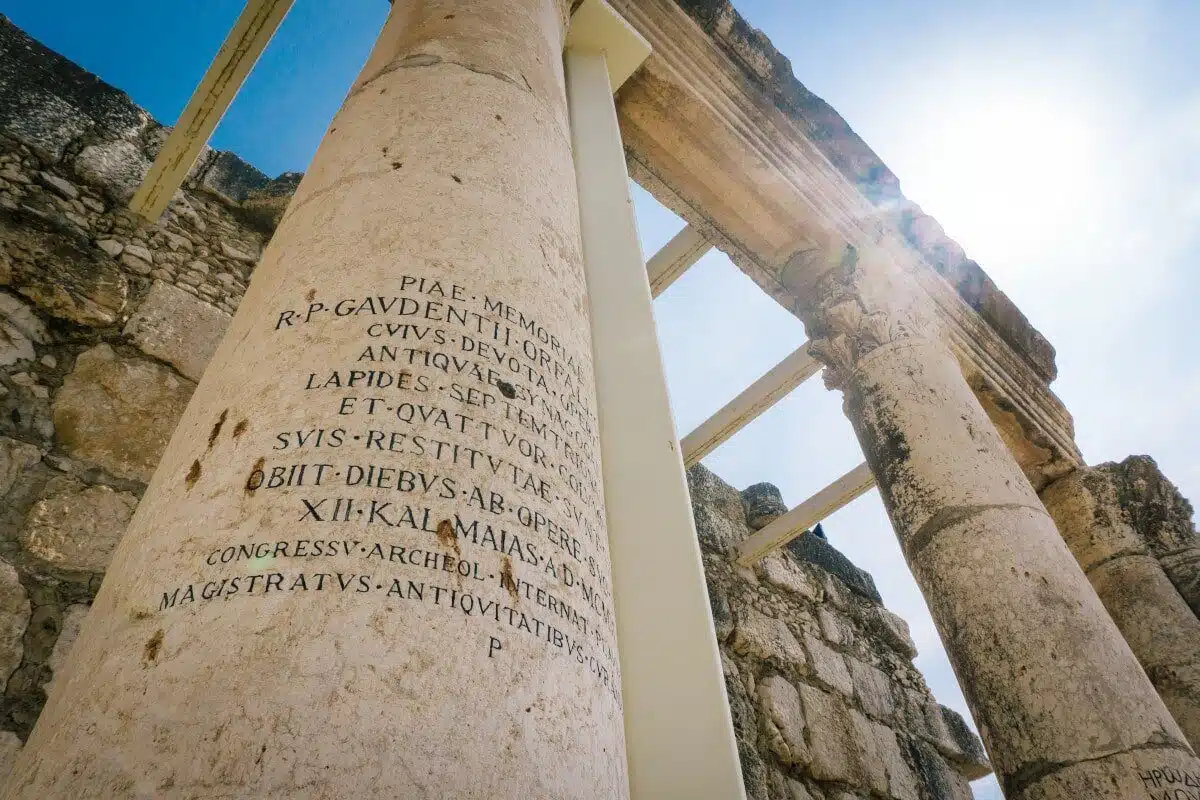
What is heritage tourism and where are the best places to experience it? I hope this post provides the answers you’ve been looking for!
What’s the first thing you do when you travel somewhere new?
Do you look for hot-spot tourist activities? Or do you head to the first available beach to catch some rays? How about dining in the nearest restaurant to sample the local cuisine?
They’re all awesome things to do.
If you’re like some people, though, you may love nothing more than seeking out historical sites, seeing relics of ancient civilizations, and stumbling upon hidden cultural gems…
If that sounds like your idea of fun, then heritage tourism might be right up your alley! But what is heritage tourism (also known as historical tourism), where are the best places to experience it, and how can you incorporate this novel type of travel into your next trip?
Keep reading to learn all about the characteristics of heritage tourism and find the answers to these questions and more!
Let’s start with the definition of historical tourism! Here’s the basic idea of heritage tourism and why it’s so important.
The Definition of Heritage Tourism
It might sound fancy, but heritage tourism is simply travelling to new destinations with historical interests in your heart!
In short, it means visiting a region to engage in experiences and activities that teach you more about its past and present.
When you embark on such a journey, you’ll encounter people, places and stories that bring an area to life and help you appreciate it on a much deeper level.
While there’s nothing wrong with traditional tourism (AKA hitting a location’s top 10 “must-see” spots and taking a few selfies so you can tick it off your bucket list), historical tourism invites you to stay a little longer, listen a little closer, and immerse yourself in the true culture of the destination.
When you do, you might be surprised by the benefits that come your way.
In fact, researchers have found that travellers who participate in heritage tourism tend to stay longer and travel more often.
One study found that their average visits span 22% longer than normal vacations! Not only does this allow you to expand your own knowledge base, but it also pumps money back into those local economies, making it a total win-win.
Worried you’ll spend all of your time walking around museums or watching educational videos in a darkened room, when the sun’s shining outside and there are countless actual attractions to see and explore?
While this might be a small part of the experience, you’ll be glad to know there are many more ways to unearth the historical culture and heritage of a place.
Today, these kinds of sites are more interesting and interactive than ever before as well.
You’ll have so much fun that you might not even realize you’re learning, growing, and travelling!
Ancient ruins, like Machu Picchu, are prime places to enjoy historic tourism. Here are a few others…
Common Areas That Heritage Tourists Tend to Visit
- Historic buildings
- Archaeological sites
- Ethnic/ecological heritage sites
- Art galleries and museums
- State, local, or national parks
- Plays and musicals
Whatever your personal style or preferences might be, you can find a way to plug into the local culture.
If an art gallery isn’t exactly your scene, then why not stock up your backpack and explore the region’s natural history through a hike?
How about visiting the local basilica, walking to the ancient ruins up the hill, watching the village parade that’s ran on the same day for hundreds of years, or exploring the local market for trinkets to use as souvenirs?
Keep your eyes open and there’s no shortage of ways to experience heritage tourism for yourself.
Interested in the characteristics of heritage tourism? You might like these posts too:
- 40 Different Types of Tourism
- How to Be a Responsible Traveller
- 50 Fascinating Facts About Travel
- 85+ Road Trip Trivia Questions & Games
- 75 Essential Things to Pack for Travel
- Key Features of the Experience of Travel
- 100 Reasons I love to Travel (& You Will Too)
With the definition of historical tourism down, let’s move onto a selection of the best destinations to experience it!
The Best Destinations for Historical Tourism
As you might imagine, some of the greatest places for historical tourism are cities and regions with a rich, diverse history! Here’s something to keep in mind though: whenever you travel to any of these places, be sure to follow the Leave No Trace rule.
One of the only cons of heritage tourism is that increased visitors to these mindboggling destinations can cause them to be compromised with congestion, pollution and littering. As long as you’re respectful and considerate, you can make the most of any visit, without impacting the site itself.
By ‘leaving no trace’, you aim for any places that you explore to be totally undisturbed by your visit- as if you were never even there! With that said, here are a few of the best places in the world to experience heritage tourism at its finest.
Italy
There’s nothing like standing at the base of the Roman Colosseum to give you an intense appreciation for Italy’s history and tourism heritage. One of the most recognizable structures in the world, it’s a great place to start your journey.
From there, Rome’s full of other spots that give you a glimpse into its heritage and history.
Continue your tour at the Pantheon, and leave plenty of time for the Vatican Museums, St. Peter’s Basilica, and Palatine Hill. All of these sites offer tours for a minimal fee, and it’s always worth the investment.
As you travel around Italy and indulge in all the fresh pasta you can stand, other spectacular heritage highlights to see include Venice’s Grand Canal, The Leaning Tower of Pisa, and the Amalfi Coast. I went around Italy last year and can vouch for the insane amounts of history around every corner!
Alongside Italy as a whole, the Colosseum in Rome is, of course, one of the best places in the world to reap the rewards of historical tourism!
England
The United Nations Educational, Scientific and Cultural Organization (UNESCO) has designated more than 1,000 World Heritage Sites around the globe. You’ll find 32 of them in England alone.
However, the heavy-hitters like Stonehenge and the Tower of London are just the beginning. There are hundreds of historical attractions all around England, and each beckons you to take a step back in time, when sprawling royal estates, barbarian tribes, and Roman legions reigned supreme.
Among other historical heritage attractions, you can castle-hop your way around the country, or ride aboard the North Yorkshire Moors Railway for an interesting trip through the English countryside. If you want to stretch your legs, you can retrace the steps of a former emperor along the Hadrian’s Wall Path National Trail.
Greece
Greece is another ancient country that’s steeped in culture and history, making it a top spot for any heritage tourists. While many travellers head straight to the Acropolis in Athens, there are plenty of other sites to see along the way.
Start by taking a stroll around Plaka, recognized as the oldest residential neighbourhood in Athens. To travel even further back in time, visit the ruins of Akrotiri, an ancient settlement from the Minoan Bronze Age.
Other spots to visit include the sanctuaries and structures of Delphi, as well as The Palace of Knossos and the National Archeological Museum. Oh, and be sure to check out the iconic hilltop monasteries of Meteora. For a good hike, head to the Vikos Gorge up north!
The characteristics of heritage tourism are plain for all to see at the might mountain monasteries in Meteora, Greece.
China
For many travellers, a visit to the Great Wall of China is a dream opportunity. It also happens to be the exact definition of historical tourism! This is a great example of how fun, exciting and interesting these kinds of trips can be.
Once you’ve spent time walking some of the wall’s 6,000 kilometres, you can learn more about China’s immense history by visiting sites like the Shanghai Museum or the ancient city of Xi’an. The Terracotta Army is, of course, also one of the most fascinating archaeological sites in the world for you to see while you’re there!
When it’s time to refresh, you can book an in-depth tea tour to learn more about the important role hot tea has played in shaping the country’s culture.
France
France is full of sites that embody the characteristics of heritage tourism. While the Eiffel Tower has been recognized as a UNESCO World Heritage Site since 1991, it’s just one of the historical stops to add to your schedule.
To learn more about the country’s artistic and cultural history, tour the left and right banks of the Seine River, visit the Mont Saint-Michel Abbey, and take in the high Gothic architecture at Chartres Cathedral. You can also visit the Champagne region to learn all about the history of your favourite celebratory bubbly.
From ancient cathedrals to hillside towns and villages, you’ll have no shortage of places to visit in France.
Egypt
Located just outside of Cairo, the Pyramids of Giza are a jarring, surreal site rising out of the Egyptian desert. In addition to being stunningly beautiful, they’re also a lesson in longevity. When the Roman Colosseum was built, these structures were already more than 2,600 years old! I can’t wait to go one day.
Travellers looking to learn more about Egypt’s history can also visit other sites including the ruins of Abu Mena, and the ancient city of Thebes. The Nubian Monuments also stand as an iconic reminder of the ancient temples and sanctuaries that once existed along the Nile.
The definition of heritage tourism is both simple and complex! Learn how to embrace it, though, and it can take your travel experience to whole new levels of enjoyment.
Tips for an Amazing Heritage Tourism Experience
Exploring a place’s heritage and tourism history can be exciting, but it’s critical to do it the right way. Before you head out on your next adventure, remember to:
- Make a list of the historical places you want to visit
- Pack your camera
- Take notes of tour times, costs and other important details
- Learn as much as possible about the history and culture of each region
- Look into personal tours led by local guides
Without proper planning, you might find that it’s difficult to engage with or truly understand the magnitude of what you’re viewing. A little research and the right guide can make all the difference in, for instance, simply admiring the enormity of the Colosseum and understanding its true historical and cultural significance.
Want to make your trip down memory lane as personal as possible?
Consider booking an adventure to learn as much as possible about your own family history. Using census records, correspondence, family notes, or newspapers, try to track down the exact location where your ancestors once lived. As you dive into these details, you’ll also learn much more about the specific places you may end up visiting one day.
What Is Heritage Tourism? A Rich, Rewarding Experience!
We all travel for different reasons. Some of us book a trip to get away and indulge in a little R&R. But then there are those journeys that are meant to fuel personal growth and development. And some of the most rewarding experiences happen when you open yourself up to learning as much as possible about the place you’re visiting and its long, intricate, and fascinating history.
So, what is heritage tourism? It’s the key that unlocks an entirely new level of sightseeing. What’s behind that picture you just snapped? Why are these ruins still standing? Who paved these towns thousands of years ago so you could stroll through them today?
When you travel intently and leverage the power of historical tourism, you discover the answers to these kinds of questions for yourself.
Dreaming of your next adventure? For inspiration and ideas, check out my 50 super-simple bucket list ideas!





